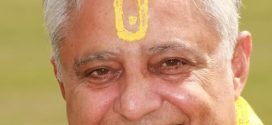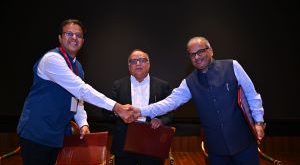Mumbai, 25th July 2023: Dr. Agarwals Eye Hospital, India’s largest network of eye hospitals, is dedicated to raising awareness about the alarming rise of Dry Eye Disease in Mumbai. With the increasing prevalence of Dry eye among Mumbai residents, the hospital is taking proactive steps to educate the public about the causes, symptoms, and available treatments to promote eye health and well-being.
Dry Eye disease occurs when the eyes fail to produce enough tears or produce tears of inadequate quality, leading to hyperosmolar tears. This initiates a cascade of inflammatory mediators, resulting in micro-inflammatory reactions that damage the ocular surface. This phenomenon perpetuates as a ‘vicious circle,’ leading to further instability in tear films and exacerbating Dry Eye symptoms.
The symptoms of Dry eye that individuals should be mindful of include stinging and burning sensations, blurred vision (especially during reading), a scratchy or gritty feeling as if something is in the eye, strings of mucus in or around the eyes, and red or irritated eyes—especially in windy or smoky environments. Paradoxically, painful experiences with contact lenses and increased tear production despite Dr.y eyes may sound contradictory but are indicative of Dry eye irritation.
“As Mumbai embraces the digital age, the main cause of Dry eye is closely linked to other regions, witnessing an upsurge in screen time on computers and mobile phones, especially in the post-pandemic era. Additionally, spending prolonged hours in air-conditioned rooms and vehicles contributes to the escalating cases of Dry eye. Being a prominent IT and entertainment hub, Mumbai’s prevalence of Dry eye stands comparable to other leading IT centers in India, like Bangalore and Hyderabad, where screen-centric lifestyles have become the norm,” said Dr Smit Bavariya, Senior Consultant Ophthalmologist, Dr. Agarwals Eye Hospital, Wadala, Mumbai.
Dry eye disease affects millions of individuals in India, with a prevalence rate ranging from 18.4% to 54.3%. It is more prevalent in older individuals, and certain occupations involving prolonged screen use or air-conditioned environments increase the risk.
“Dry eye disease affects individuals of all age groups in our society, as most of us are increasingly glued to screens for professional purposes or entertainment. Failure to address Dry eye can lead to severe disturbances in vision and reduced working capacity, impacting our daily lives significantly. It is crucial to address any eye health concerns promptly, avoiding self-diagnosis and treatment based on online information. Seeking professional advice from eye specialists is vital for accurate diagnosis and appropriate treatment,” further added Dr Smit Bavariya, Senior Consultant Ophthalmologist, Dr. Agarwals Eye Hospital, Wadala, Mumbai.
In the bustling metropolitan of Mumbai, environmental factors such as high pollution and low air quality index, coupled with prolonged exposure to traffic congestion, contribute to evaporative Dry eyes. Dr. Agarwals Eye Hospital emphasizes that our cornea directly absorbs oxygen from the atmosphere, and increased pollution can disturb tear films, leading to more discomforting symptoms.
The hospital advocates early intervention and prevention strategies to mitigate the impact of Dry eye. Initial approaches include educating individuals about the condition, modifying their environment (eliminating direct high airflow/fans, reducing screen time, and using humidifiers), and practicing proper lid hygiene, such as warm compresses. The use of oral essential fatty acids (omega-3 fatty acid) can also help alleviate Dry eye symptoms.
The hospital further offers advanced treatment options for severe Dry eye cases, including preservative-free eye lubricants, night-time ointments, moisture goggles, and device-assisted heating or expression of the meibomian glands. Intense pulsed light therapy has also shown promising results.
Dr. Agarwals Eye Hospital stresses the significance of following the 20-20-20 rule for individuals with prolonged digital device usage. This rule suggests taking a break every 20 minutes of screen time to focus on an object 20 feet away for 20 seconds, along with keeping the screen at least 20 inches away from the eyes. Screen levels should be positioned below the eye gaze to reduce tear evaporation.
Regular eye check-ups play a crucial role in early detection and management of Dry eye, especially for those highly susceptible to developing the condition due to prolonged screen usage. The hospital recommends routine eye examinations for individuals to maintain their eye health and working capacity.
Dr. Agarwals Eye Hospital actively engages in community education initiatives to create awareness about Dry eye disease. The hospital conducts lectures in different IT corporates and banks to educate employees about proper screen usage and hosts webinars to provide valuable insights on managing Dr.y eye effectively.
 Newspatrolling.com News cum Content Syndication Portal Online
Newspatrolling.com News cum Content Syndication Portal Online






